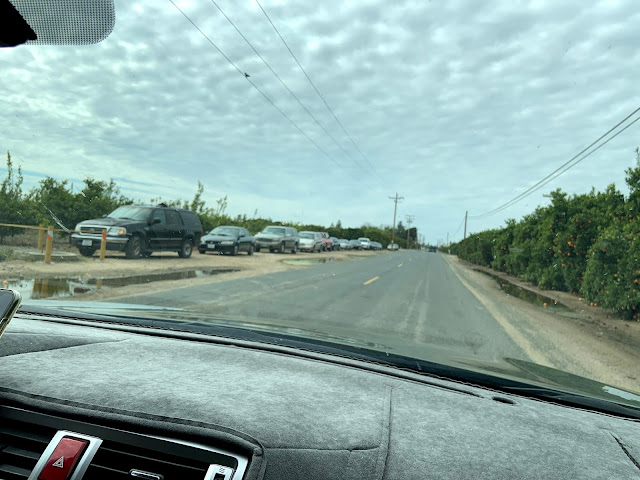A Socially Distanced Outing
There's been a steady stream of folks walking and biking by our house this weekend. Don't recall past springs bringing this many people out, but we must admit, often this time of year we are on the road, so perhaps it is the usual. Yet perhaps it is the desire to burst out of doors after the isolation of "shelter in place," of being locked down working and schooling at home all week. What is clear is the careful social distancing of families as they pass by, smiling, waving, and calling hello, yet not mingling.
On Sunday, we drove up to nearby Kaweah Lake in the Southern Sierra Nevada foothills. It was nice to see others enjoying this stunning day to walk, picnic, fish, skip and splash rocks, bask in the spring sun, marvel at the views and the wildflowers.
Except by the dam, the reservoir is just the Kaweah River in spring. Once the snow runoff begins, this area will be underwater until the water is used for agriculture.
In the later spring, when the lake is filling, we kayak over this raven's perch. We asked, is it the inspiration of spring that made everyone wave and greet each other, all while keeping our distance? that made passing cars and trucks carefully, patiently, slow and wait as Marilyn took pictures of wildflowers by the roadside? Or is it the realization that we all need to come together during this unsettling time?
While fiddleneck and California poppies color distant hills, around the lake there are California suncup. Marilyn is using the Central California Wildflowers app for her education, but she welcomes correction if she's got it wrong.

On Sunday, we drove up to nearby Kaweah Lake in the Southern Sierra Nevada foothills. It was nice to see others enjoying this stunning day to walk, picnic, fish, skip and splash rocks, bask in the spring sun, marvel at the views and the wildflowers.
Mountain sandwort.
Red maids.
Lowly penstemon.
After checking out new and old places to launch our kayaks, we headed out from the lake to take the long way home.
Along Yokohl Drive: rolling meadow with fence that may hold back a cow. The slight rise conceals Yokohl Creek, which rarely flows, and then with about 1 inch of water spread across a 20-foot width. Rocky Hill in the background.
Rather lucky cows, resting in bucolic surroundings kept green by recent rains.
Whimsical bee boxes--usually bee boxes are white.
Looking down on the valley, a tapestry of agriculture...
...and the Friant-Kern Canal, which runs south for 100 miles from the San Joaquin River in Fresno County to Kern County, providing water to local farms.
Cars of farmworkers, who harvest navel oranges even on Sundays.
Navels are a major crop in our area and the favorite throughout the country for eating.
Packing houses pack, store, and distribute tree fruit and nuts.
Passing by old vineyards...
...and new,...
...a new pistachio orchard,...
...and a mature walnut orchard.
A stop at Cairn's Corners, under the olive trees,...
...where Doug buys us a box of navel oranges...
...and sweet potatoes. (We have plenty of lemons on our backyard tree.) Woodie Guthrie called this area Pastures of Plenty, writing in one of his songs, "Green pastures of plenty from dry desert ground."

We're near Lindsay, which has been called the Olive Capital of the World. You've probably eaten many an olive from here, though they grow throughout the area.
Old and New: a barn that has stood for decades next to a solar farm.
Mandarin trees covered in netting to keep bees out. If you ever eat a Cutie or Halo mandarin and find a seed, you know a bee got into the orchard and cross pollinated the trees.
We scared up a flock of egrets, but they settled again to hunt for worms in a walnut orchard irrigated by flooding between the rows.
One of a multitude dairies, often owned by Portuguese or Dutch families. Tulare County has been called an "island surrounded by cows."

Winter wheat, netted mandarin trees, and the Sierra Nevada.
In these days of covid 19 and social distancing, how fortunate we are to be surrounded by such beauty and to have the time, health, and means to spend a leisurely day enjoying it.



























Comments
Post a Comment
We love hearing from our readers! If you wish your comment not to be "Anonymous," you can sign into your Google account or simply leave your name at the end of your comment. Thanks!